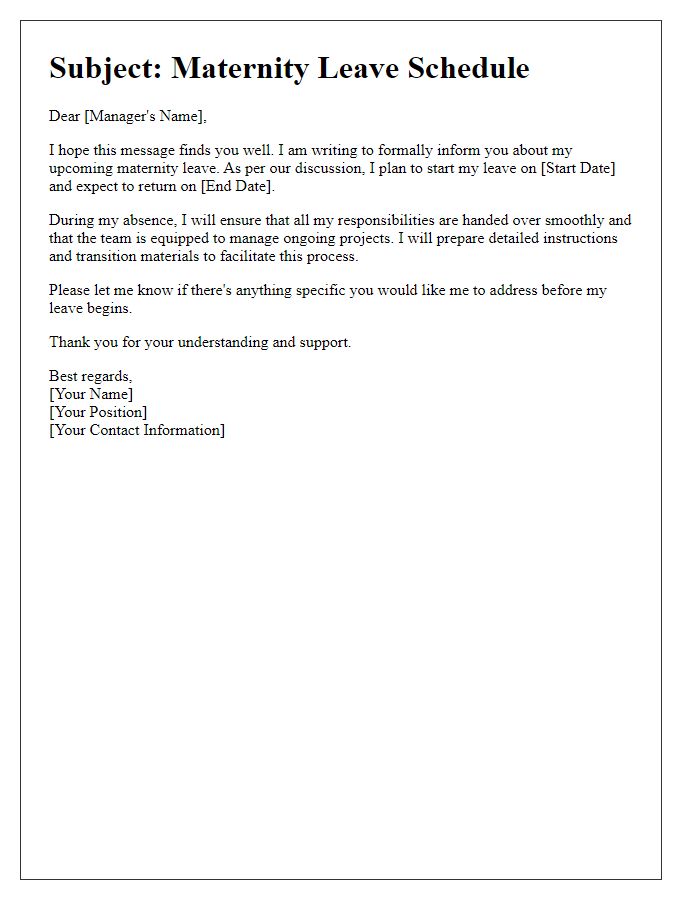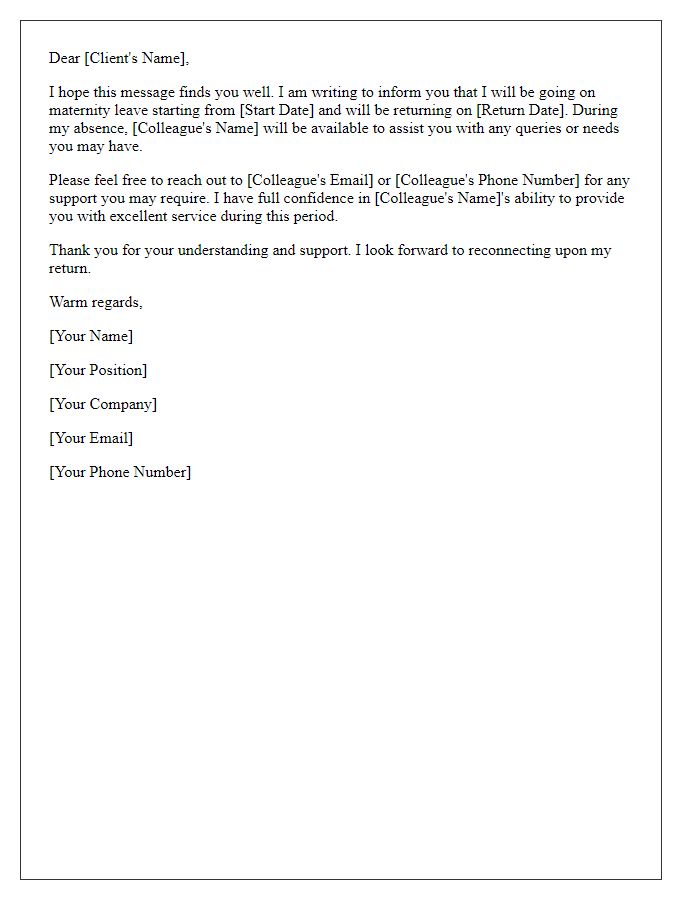Hey there! Preparing for maternity leave is an exciting time, but it can also feel a bit overwhelming. In this article, we'll walk you through a practical letter template to help you announce your maternity leave plans to your colleagues and manager. Whether you're sharing your expected leave dates or your transition plans, we've got you coveredâread on to discover how to craft the perfect announcement!

Greeting and recipient's name
Maternity leave plans involve important considerations for expecting parents. Limited-duration benefits such as the Family Medical Leave Act (FMLA) allow eligible employees up to 12 weeks of unpaid leave, assuring job protection during this critical time. The expected due date, which marks the beginning of this period, often prompts planning for coverage in workplace responsibilities, ensuring a smooth transition for colleagues. Communication methods, including emails and official notices to supervisors or HR departments, solidify intentions and clarify expectations. Establishing a point of contact for urgent matters enhances support during the leave. Adjusting to new family dynamics involves significant personal adjustments, along with preparations for welcoming newborns into the home environment.
Mention of maternity leave start date
Maternity leave plans typically involve notifying colleagues and management about essential dates. The upcoming maternity leave is set to begin on January 15, 2024, lasting for approximately 12 weeks. Key responsibilities, deadlines, and ongoing projects will be delegated appropriately to ensure seamless workflow during this period. Transition meetings will be scheduled to discuss assignments in detail, allowing for a smooth handover and continued progress in team goals. Communication channels will remain open for urgent matters, ensuring necessary updates are conveyed in a timely manner.
Details of work transition and handover
Plans for maternity leave necessitate careful work transition and handover processes to ensure continuity and support for ongoing projects. Prior to the leave, a detailed outline of responsibilities and tasks will be created, highlighting key projects such as the marketing campaign for the upcoming product launch in March 2024 and the quarterly budget review due in April 2024. Designated team members will be assigned specific tasks, including project oversight by Sarah Thompson and client communications by James Reynolds. A comprehensive handover document will include timelines, critical contacts, and status updates, shared during a transition meeting scheduled two weeks prior to leave. This proactive approach ensures that operations remain uninterrupted and team members are well-equipped to handle responsibilities during the absence. Regular check-ins will be planned for the first month post-handover to address any challenges that may arise.
Expected return date
Maternity leave allows expecting parents to take time off work for childbirth and early parenting responsibilities. Employees typically notify their employers about their maternity leave plans, including their expected return date. Standard maternity leave duration varies by country and organization, offering anywhere from several weeks to several months of paid or unpaid leave. In the United States, the Family and Medical Leave Act (FMLA) provides eligible employees with up to 12 weeks of unpaid leave. It is essential for the employee to communicate their planned leave duration effectively to ensure proper coverage in the workplace. Timely communication helps maintain workflow and allows teams to manage projects during the employee's absence.
Contact information for questions or concerns
Maternity leave plans involve essential considerations for upcoming parental responsibilities. This leave typically occurs around the delivery date, often lasting several weeks or months, depending on company policy and local regulations. Employers may require advance notice of intentions, usually ranging from four to eight weeks, to facilitate staffing adjustments. During this period, contact information remains crucial, allowing colleagues and managers to address questions or concerns efficiently. Communication tools, such as email addresses or designated phone numbers, ensure that necessary information continues to flow, supporting teamwork during the transition. Clarity about expectations for project handovers and point-of-contact personnel is vital for maintaining workflow continuity.













Comments